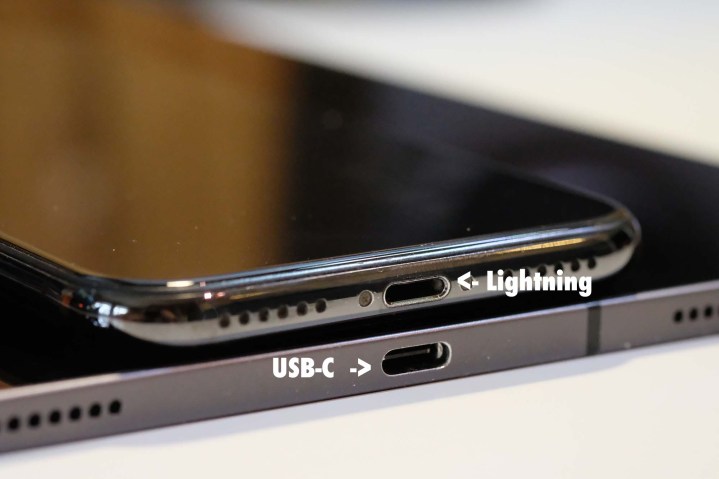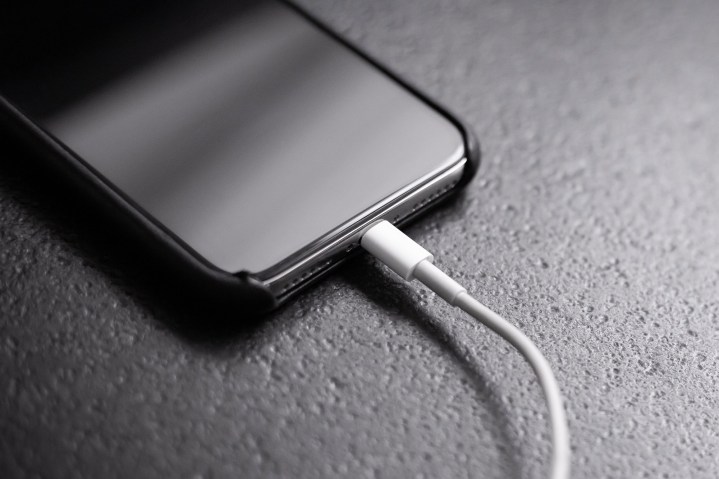The Lightning port is about to turn a decade old, but even so, it still finds a place in Apple’s iPhones. It’s very strange, especially considering that numerous other Apple devices are USB-C powered already. While we have seen a plethora of leaks hinting towards the inclusion of USB-C on iPhone, it’s yet to come to fruition. That said, Apple will not be able to hold on to the Lightning port for too much longer.
A mandate from the European Union forces manufacturers to put USB-C ports on phones and other devices by 2024. Although the directive isn’t specifically aimed at Apple, it will be the most affected. Combine that with numerous reports claiming that Apple is testing USB-C iPhones, it’s only a matter of time before all of this turns into a reality.
Here’s everything we know about USB-C iPhones, and when we expect to finally see them.
USB-C vs. Lightning
Before digging into Lightning’s numbered days, it’s important to look at the difference between it and USB-C — and why the latter is objectively the better charging standard.
For starters, Lightning is a proprietary tech that only works with Apple products, while USB-C is a standard that is compatible with devices from numerous manufacturers. Lightning can transfer data at a speed of up to 480Mbps, whereas USB-C is capable of transfer speeds anywhere between 5 and 40Gbps. As the numbers indicate, USB-C is way ahead in terms of transfer speeds.

But USB-C’s superiority doesn’t stop here, as it also has a massive advantage in terms of supported wattage. For context, the lightning port restricts charging to 20W, while Android phones with USB-C are hitting it out of the park with charging speeds of up to 150W. Not every phone with USB-C is capable of 150W charging, but the potential is there to reach ludicrous speeds.
To sum up, USB-C is significantly better than Lightning in the areas that matter. It offers wider compatibility, faster transfer speed, and power delivery for charging.
The Europen Union mandate
On June 7, 2022, lawmakers of the European Union voted in favor of a common charging standard for electronic devices. The policy envelopes a total of 15 categories which include mobile phones, tablets, cameras, audio wearables, etc. Manufacturers have until the end of 2024 to incorporate USB-C on their devices and abide by the new policy. The policy also encompasses laptops, however, in this case, brands have 40 months (early 2026 roughly) to make the required changes.
We have a deal on the #CommonCharger! 🇪🇺
More savings for EU consumers & less waste for the planet:
🔌 mobile phones, tablets, cameras… will have #USBtypeC
🔌 harmonised fast-charging technology
🔌 unbundling of sale of chargers
The EU general interest has prevailed! pic.twitter.com/i2UAE7kzyI
— Thierry Breton (@ThierryBreton) June 7, 2022
The law aims at reducing waste and easing people’s lives as they would be able to use one charger for all of their devices. According to the EU, the rules will be able to cut down around 11,000 metric tons (over 12,000 tons) of e-waste annually and save customers €250 million (around $268 million USD) on “unnecessary charger purchases.”
If Apple wants to keep selling iPhones with a physical charging port, it will have to be USB-C. The EU’s new policy ensures that the tech giant is not able to get away by simply offering an external dongle as it did years ago.
Pushes from U.S. senators for a common charger
Following the agreement of the European Union, a group of U.S. senators sent out a letter to the US Commerce Department demanding a common charger law. In the letter, the senators mentioned how proprietary chargers — such as Apple’s Lighting charger — amass unnecessary e-waste while imposing a financial burden on consumers who own devices from different manufacturers.
The letter stated, “The EU has wisely acted in the public interest by taking on powerful technology companies over this consumer and environmental issue,” and, “The United States should do the same.”
It’s worth noting that the senators are not asking the commerce department to consider USB-C as the universal charging standard. Instead, they seek “a comprehensive strategy” that allows the department to create its own standard.
A USB-C iPhone is coming in 2023 or 2024
iPhones have been long rumored to get USB-C, and while it isn’t happening this year, the days of the Lightning port are certainly numbered. Popular Apple analyst Ming-Chi Kuo added further weight to the leaks, stating that iPhone 15 series will be the first to make the switch to USB-C. According to Kuo, USB-C would improve charging speeds and transfer rates on iPhones.

Soon after this, Bloomberg’s Mark Gurman put out a report claiming that Apple is testing iPhone prototypes with USB-C. Gurman also believes that the company is working on an adapter that will make Apple’s accessories with lightning port compatible with the USB-C iPhone.
1. Portless iPhone may cause more problems due to current limitations of wireless technologies & the immature MagSafe ecosystem.
2. Other Lightning port products (e.g., AirPods, Magic Keyboard/Trackpad/Mouse, MagSafe Battery) would also switch to USB-C in the foreseeable future. https://t.co/KD14TgBmtr— 郭明錤 (Ming-Chi Kuo) (@mingchikuo) May 15, 2022
If these reports are true, we might see a USB-C iPhone as early as 2023. It’s currently uncertain if the transition will take place on iPhones sold worldwide or just for European countries. Apple wouldn’t want to ditch Europe by denying the policy, since the region is a major market for iPhone sales. Furthermore, it seems unlikely that Apple would exclusively produce USB-C iPhones for Europe and Lightning-equipped ones for other markets.
The only way Apple could possibly evade the EU’s policy is by creating an iPhone that relies exclusively on wireless charging. Rumors of this have also circulated, though Kuo believes it is not happening anytime soon “due to current limitations of wireless technologies and the immature MagSafe ecosystem.”
So, where does that all put us? At the soonest, Apple will have USB-C iPhones ready for 2023. If that doesn’t happen, the company will have to make the switch in 2024. We may not get a USB-C port on the iPhone 14, but come the iPhone 15 or iPhone 16, that will finally change.



